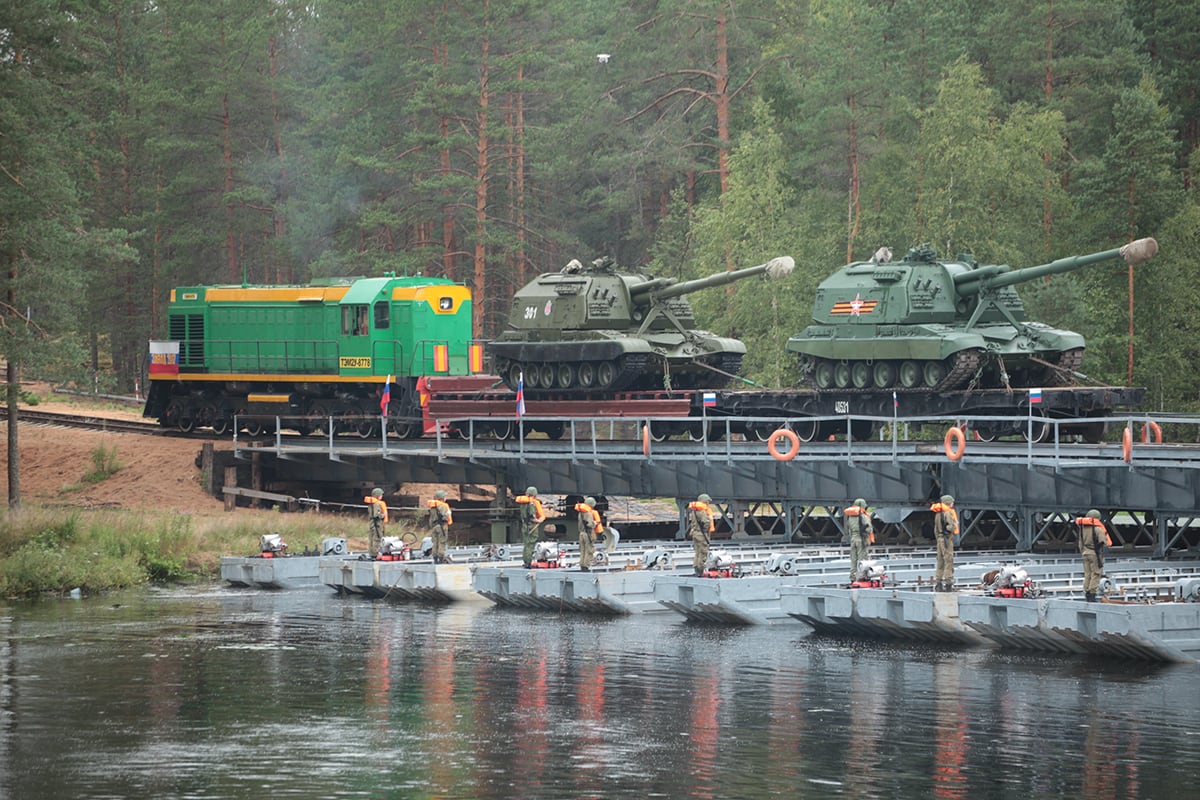An Army major proposes in a recent paper that the Russian offensive, a mostly conventional warfare campaign that also used social media to recruit proxy troops, showcases how Russian units could defeat the U.S. Army in key eastern European states.
Despite a drumbeat of worry about the Russian New Generation, or hybrid, warfare, the paper notes that conventional land combat, with rockets, missiles, artillery, mechanized infantry and tanks, has dominated the Russian-Ukrainian conflict.
Experts interviewed by Military Times said that in a long, drawn-out conflict the United States and NATO allies would likely win over Russia if there was a major land grab on the eastern European border.
RELATED

But the fear is that Russian forces could move quickly and grab pieces of territory, similar to what happened in Crimea and now in Ukraine. In that scenario they could entrench themselves deeply enough so that the slower response from U.S. and NATO forces would arrive too late.
The paper, “Cyborgs at Little Stalingrad: A Brief History of the Battles of the Donetsk Airport,” was published this month by The Institute of Land Warfare at the Association of the U.S. Army.
The author, Maj. Amos C. Fox, is the operations officer for the 1st Battalion, 35th Armored Regiment, 2nd Armored Brigade Combat Team, 1st Armored Division, Fort Bliss, Texas.
Positioning themselves in three “intermediate camps” in Russia but near the Donbas region, an estimated 36,000 soldiers have participated in the campaigns since they launched in 2014, Fox wrote.
The first attack on the Donetsk Airport failed and Ukrainian military forces, later nicknamed “cyborgs” for their fierce resistance, repelled the separatists and Russians.
But the Russians regrouped and flowed thousands of soldiers into the region over the next weeks and months. That ultimately led to a siege-like fight in which the Russians took over the mostly destroyed airport and grabbed other territory, which they continue to try to expand incrementally.
Those soldiers have rotated from as far as the eastern edges of Russia near Japan. The Russian military has brought them in groups of 600-800 troops, part of their battalion tactical groups, or BTGs.
And they are well-equipped.
Fox cites unclassified reports showing an estimated 200 tanks, 525 armored personnel carriers, 145 artillery pieces and 83 multiple-launch rocket systems remain in the region to support both Russian forces and separatist operations.
Cyber operations, including misinformation campaigns and social media recruiting were factors in the fight and do open questions about what the Russian military might be able to exploit in Belarus, Baltic States, the Balkans and Moldova, given the ethnic ties those areas have to Russia.
And it is those rotations, combined with proxy recruiting and conventional warfare that makes Fox worry that U.S. Army brigades just are not ready for that type of threat.
Retired Lt. Gen. Ben Hodges, former commander of U.S. Army Europe, wrote for the Center for European Policy Analysis that the major Russian exercise known as Zapad, conducted in 2017 near the Baltic region, showcased how the Russian military has advanced its mobility.
“More concerning than actual firepower was Russia’s logistical prowess in terms of speed compared to NATO,” Hodges wrote. “Russia faces no international boundaries or customs procedures that could inhibit movement in a crisis.”
Fox notes that Russian forces in this ongoing campaign have fought “significant battles and waged decisive sieges on a scale that vastly exceeds what the U.S. Army brigade combat teams (BCTs) can experience at combat training centers.”
“These battles are important because they remind students of war that rugged, land-centric combined arms warfare has not been thrown into the dustbin of history but is instead alive and well,” Fox writes.
And it goes beyond the tactical small unit, troop level.
The major points out that the Russian generals and their support staff have gained command and control, sustainment and other experience that’s only marginally replicable in Army training exercises.
“The fact that Russia has rotated 27 brigades and regiments through the Donbas while the U.S. Army possesses only 31 BCTs must not be overlooked,” Fox wrote. “The Russian military, especially its ground forces and its combat experience, need to be respected.”
Todd South has written about crime, courts, government and the military for multiple publications since 2004 and was named a 2014 Pulitzer finalist for a co-written project on witness intimidation. Todd is a Marine veteran of the Iraq War.








